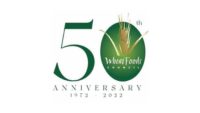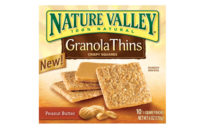WFC couldn’t have done this without the help of Kansas farmers; the Home Baking Association; AIB; Kansas State University’s demonstration mill; the Farm to Market Bread Co., Kansas City, Mo.; and the Kansas Wheat Commission, Manhattan. Noted carbohydrate expert and nutrition educator Dr. Julie Miller Jones accompanied the safari and answered questions about gluten, the glycemic index, labeling whole grains and numerous other topics.
Our goal was to educate key influencers about wheat’s nutrition and healthfulness and spread the word for us. And it worked.
Asked what they learned, participants told us that “wheat is not just wheat, and flour is just not flour.” They learned about the six classes of wheat, their different end uses and how different types of flour yield different end products.
They were also impressed by the risks and challenges of farming. Just hours after visiting the Ken Wood Farm and combining wheat, the area experienced a significant rainstorm. Wheat safari participants were amazed to learn that the rain would likely have destroyed the crop had it not been harvested.
Even though most of the participants were registered dietitians, they learned new facts about the importance of grains as a source of fiber, energy and good nutrition. There was great discussion on how to identify whole grains and why gluten-free diets only make sense for those diagnosed with Celiac disease or nonCeliac disease sensitivity. The reason the Dietary Guidelines do not recommend only eating whole grains and the importance of enriched grains were also discussed.
The safari paid off in mega media impressions. Participants have blogged, tweeted, posted on their websites, written articles, pinned photos on Pinterest and conducted radio interviews about the event. An article with two wheat recipes ran in the Pittsburgh Post-Gazette; a column appeared on HealthNewsDigest.com; a video was uploaded to YouTube; and a feature is scheduled [at press time] to appear on the website of Food & Nutrition magazine, which is published by the Academy of Nutrition and Dietetics. The safari was also mentioned on KRVN radio in Nebraska and on the Dakota Farm Talk program, which goes to 12 radio stations in the Dakotas and Minnesota; in the Milling Journal, a quarterly magazine for the milling industry; on Grainnet.com; the High Plains Journal, a regionally weekly agricultural news magazine; as well as here in Snack Food & Wholesale Bakery, along with numerous blogs, tweets and websites.
Many of those reached by our participants are influencers in their own right, which will multiply our messages. We expect to see more impressions in the weeks and months to come, as we continue our relationship with these important health and nutrition influencers.







